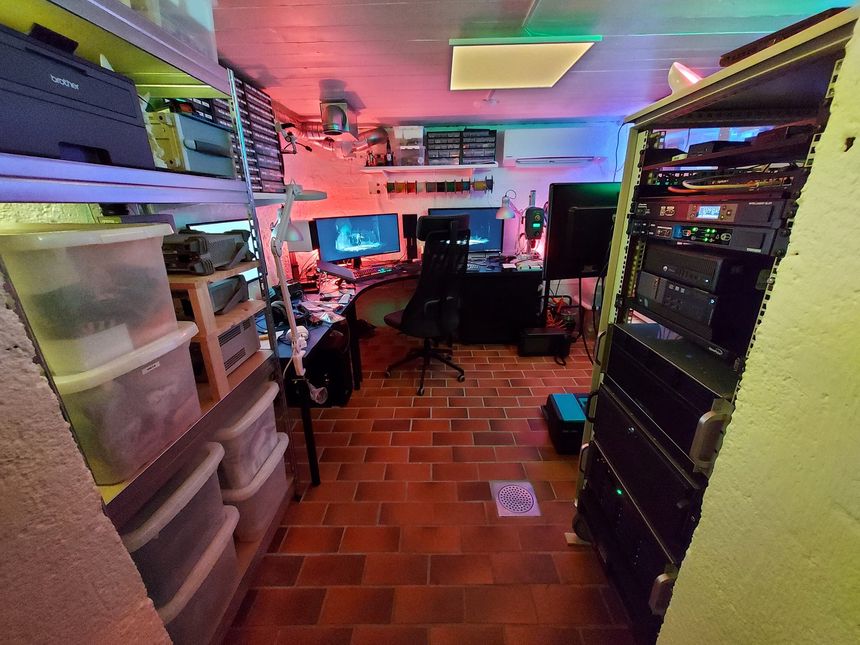In our new house there is an 20 m² basement, it consists of two rooms — both 10 m². I have turned the inner room into my new home office/server room, with my electronics lab and homelab.
Table of contents
TL;DR
Here is a quick video tour.
The room
All walls are concrete, there is only one outer wall as the house extends beyond the side walls. The outer wall is 40 cm thick, and has a vent — that will come in handy later.
The two basement rooms are also separated by a 20 cm concrete wall. There is just an opening between the rooms — no door, I am keeping it like that to make it feel more open and to have some air circulation.
My room is 3.1×3.2 meters, with a ceiling height of 2 meters. The floor has tiles, and there is a water heater in one corner.
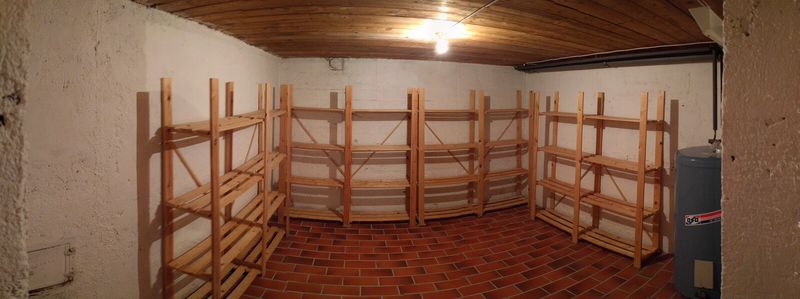

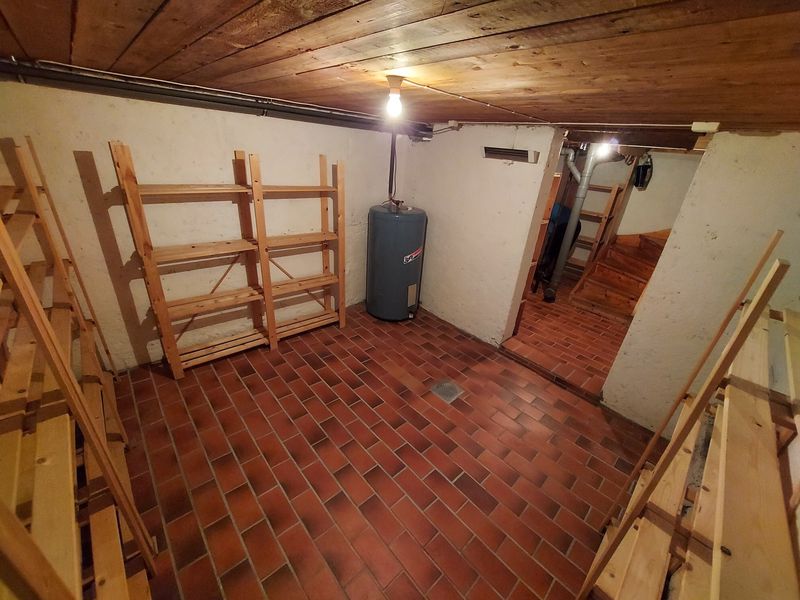
Planning
I measured the room right after we bought the house, so I had time to plan before the final handover. I made a floor plan on diagrams.net to get an idea on how to best utilize the space I had available.
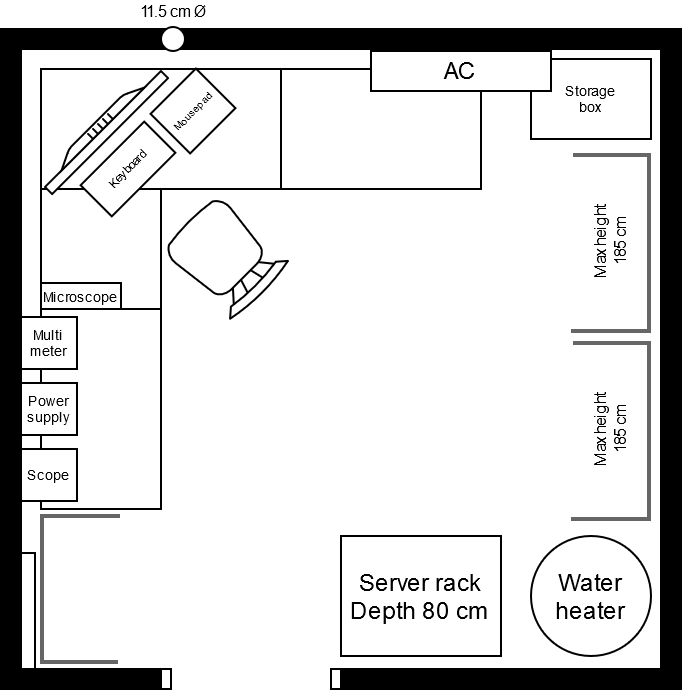
This allowed me to try out different layouts to see that worked best.
Now having the option to start from scratch was awesome! Armed with the knowledge from my previous home office — what worked, and what didn’t work, I made a wish/todo list for what I wanted.
- A heat pump
- Paint ceiling and walls white
- Exhaust ventilation and fume extraction
- Fiber internet
- Fit my server rack
- Two dedicated electrical circuits
- Plenty of electrical outlets
- Good lighting
- Shelves and storage
- Corner desk
- Electronics lab with enough desk space
- Network patch panel
Renovating
First things first, clear the room!
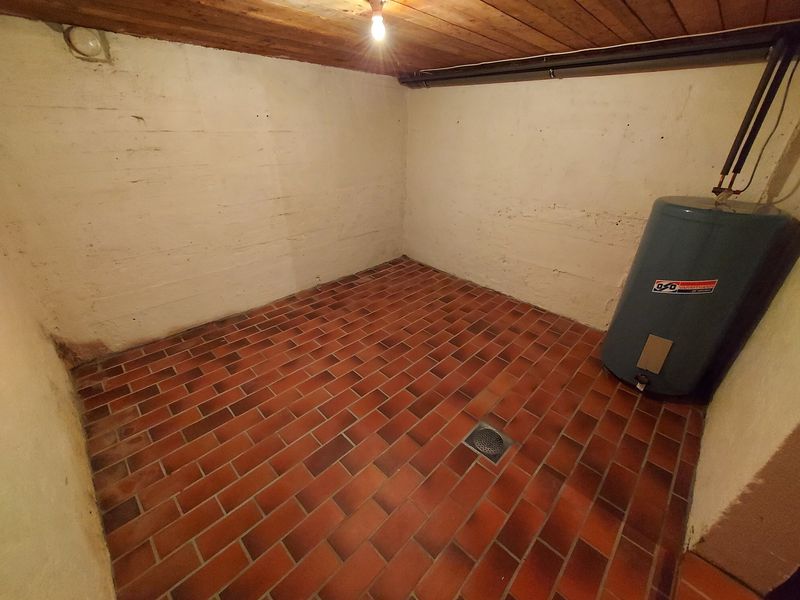
Core drilling
Now, before I did anything else I wanted to finish the core drilling for the heat-pump coolant pipes. With the outer wall being 40 cm solid concrete, core drilling was the only option.
Very glad I got this done first — it was a mess!
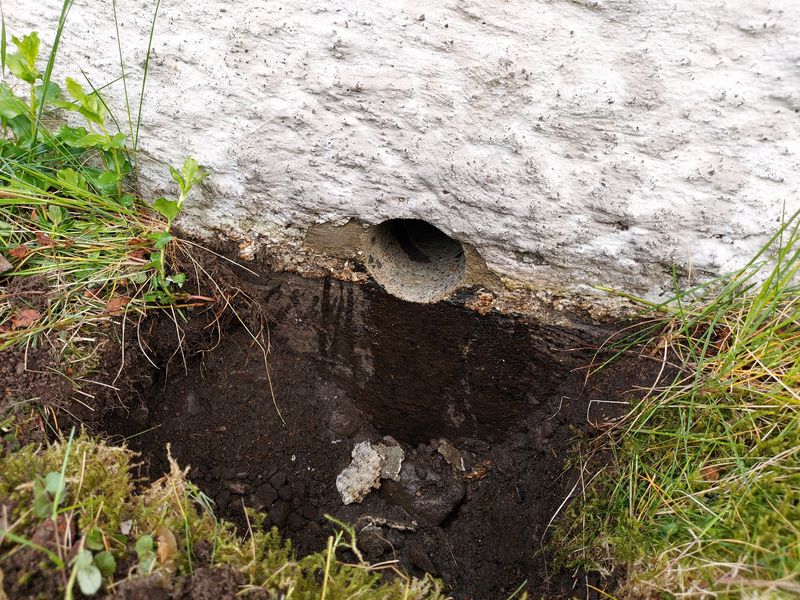
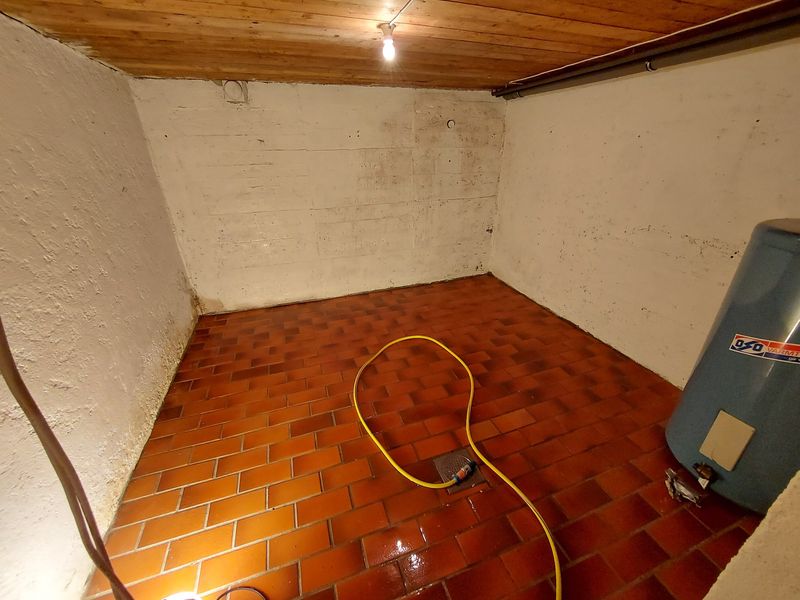
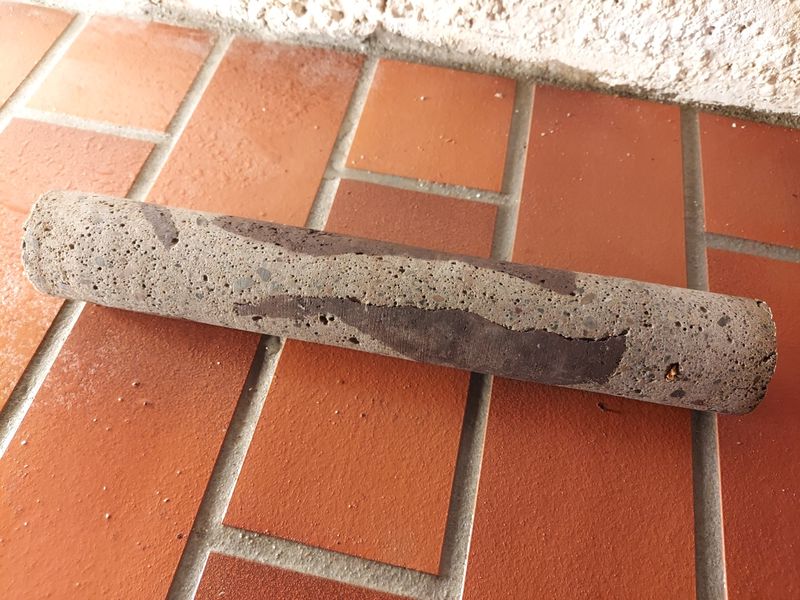
Painting
The first thing I tackled was the ceiling — it is old wood paneling, with some pretty big gaps between the boards. To make it look a bit nicer, and to prevent dust and debris from falling though, as it did in my previous home office, I’ll filled all the gaps with caulk.
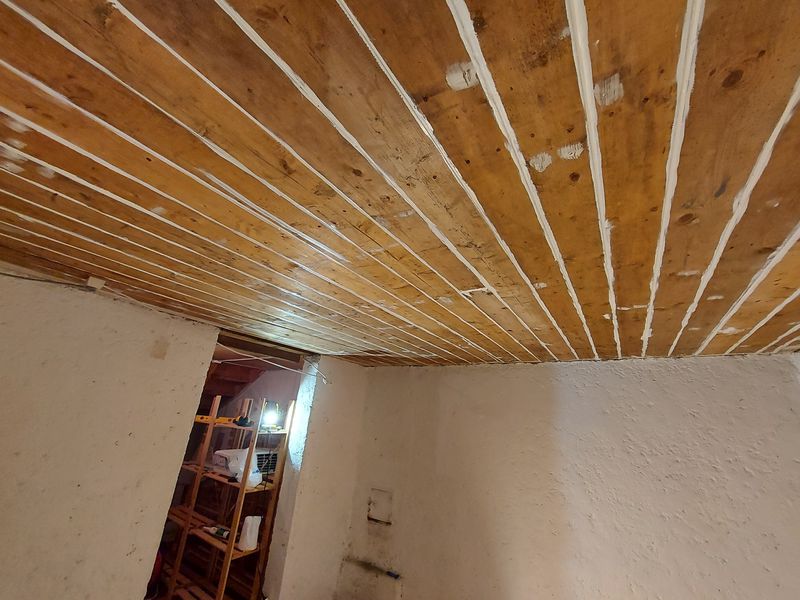
I had to paint the ceiling four times, as the boards were very dry and sucked a lot of paint. I only needed one coat of paint on the walls. I made sure to fix all holes with spackle before I painted.
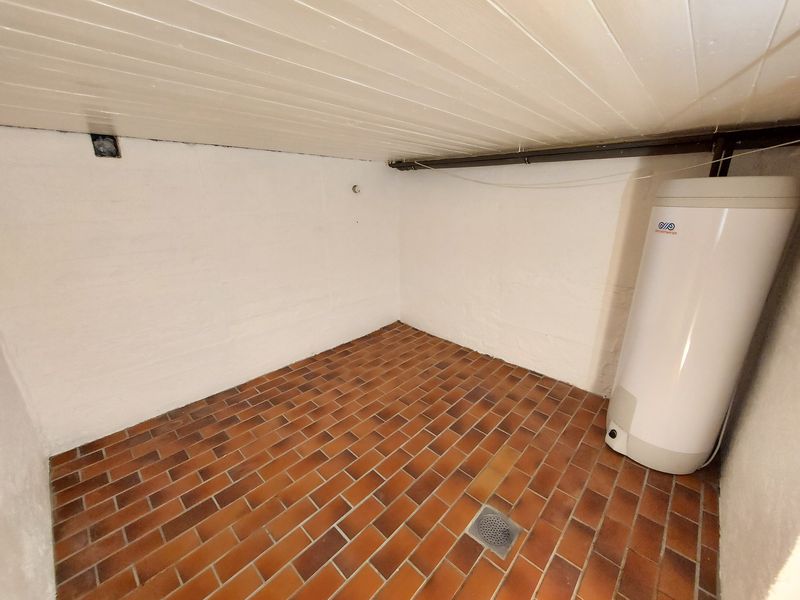
The white ceiling and the fresh coat of paint on the walls made a huge difference, the room brightened up and felt a lot more spacious. The plumber also replaced the water heater while I was painting, so I got to behind behind it easily 😃
I like the rough look of the old ceiling paneling and the rough concrete walls 👍
Heat pump
One major problem I had in my previous home office was heat, I did several ventilation projects but I was never really satisfied. So I decided early on that I wanted a heat pump. I got a special model that is capable of cooling with an outside temperature down to -15°C.
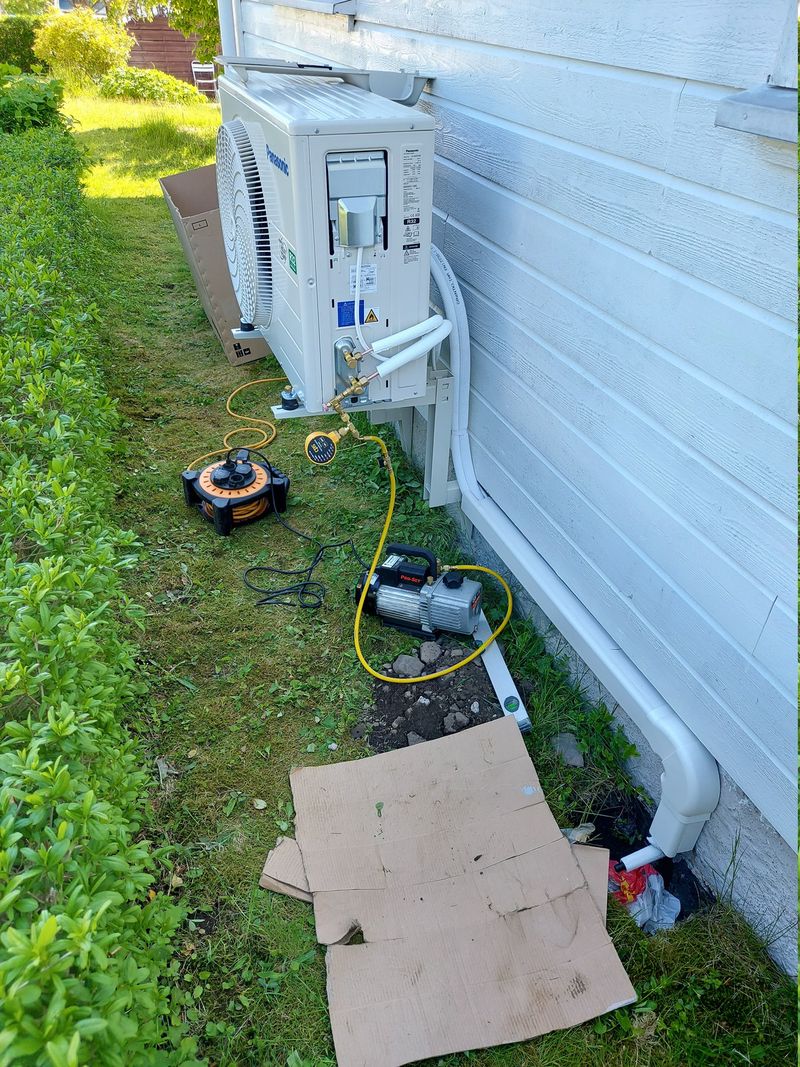
The outside unit is on the backside of the house, we don’t see, or hear it 😃
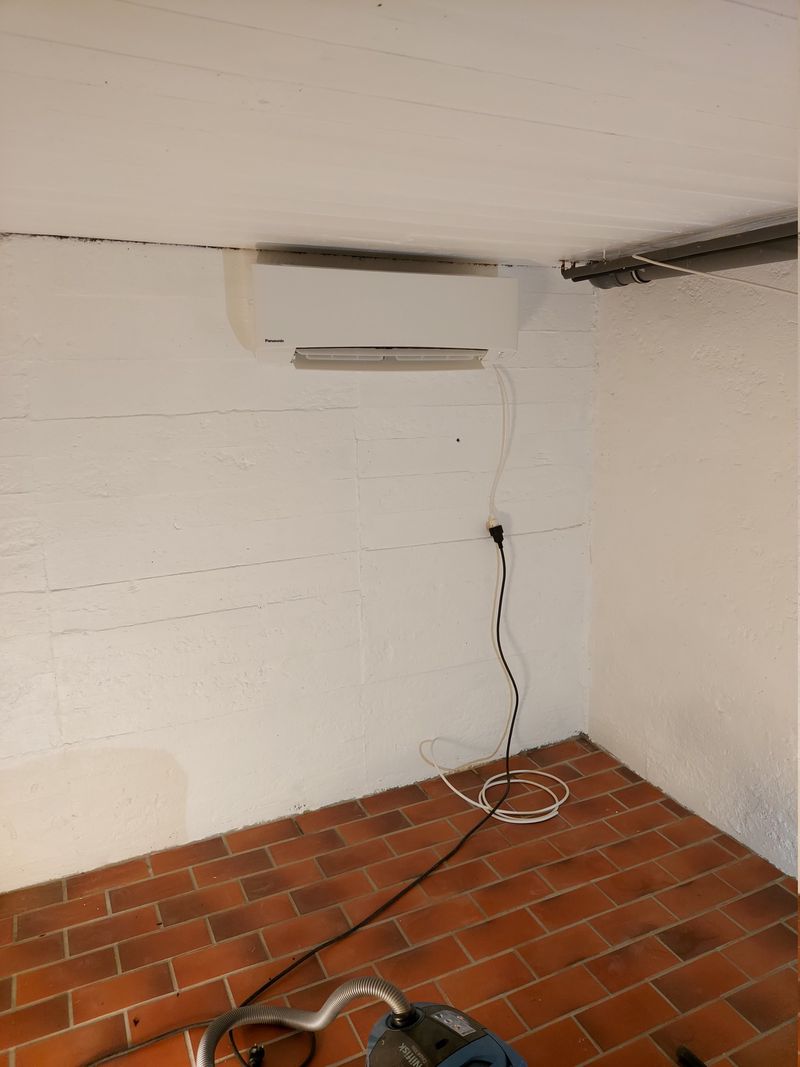
I took care planning where to install the indoor unit, so that it wouldn’t blow directly on me while I was sitting at my desk.
When I installed this I didn’t really know how much cooling, or heating, I would need… I later learned that I do need cooling in the summer, and heating in the winter 😃 Having one unit do both is awesome, no more portable AC and complicated duct work 👍
Moving in
About a week after the heat pump got installed; I slowly started to move things into the new home office. I didn’t spend much time getting things set up in the beginning, it was summer — and we had a whole house to move.

Getting the server rack down into the basement was a close call, the basement door is 5 mm wider than the rack. And I had to remove the wheels to get it through.
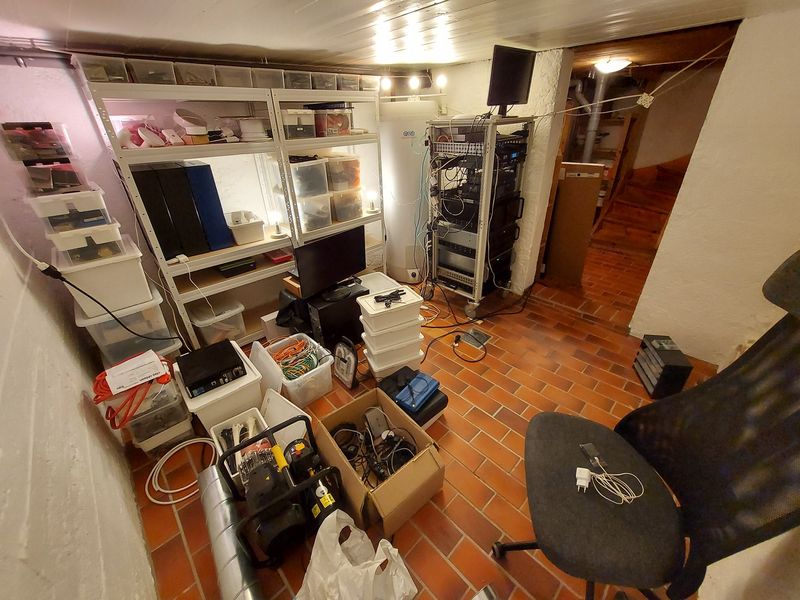
I did get the server rack operational quickly, so that we would have internet and Wi-Fi access.
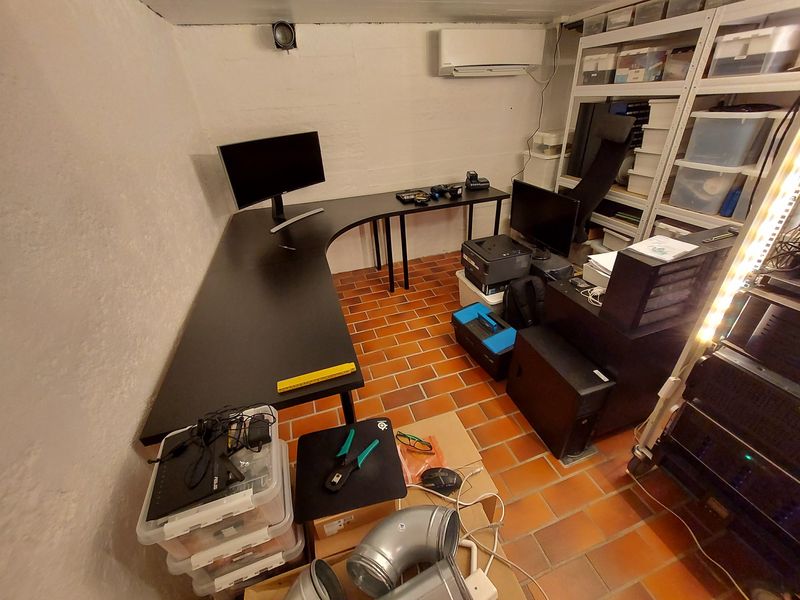
With the desk in place, it feels like it is coming together 😄
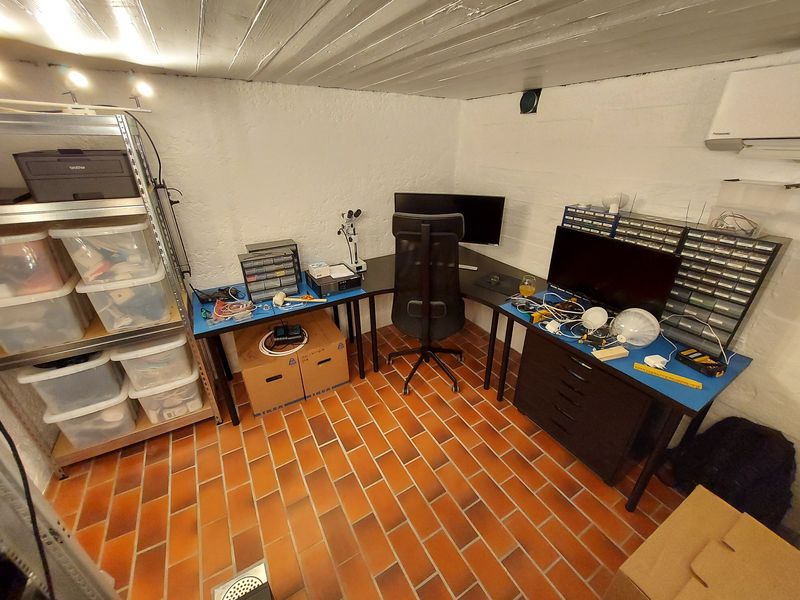
About two months after we moved in — I started picking up the pace on getting the home office ready.
Ventilation and fume extraction
Now, the heat pump is great — but it doesn’t replace the air. And since I will be soldering down here I need some ventilation and a fume extractor.
The vent in the outer wall is 14×14 cm, big enough to fit a 125 mm ventilation spiral duct through. I sealed around the duct with construction foam.
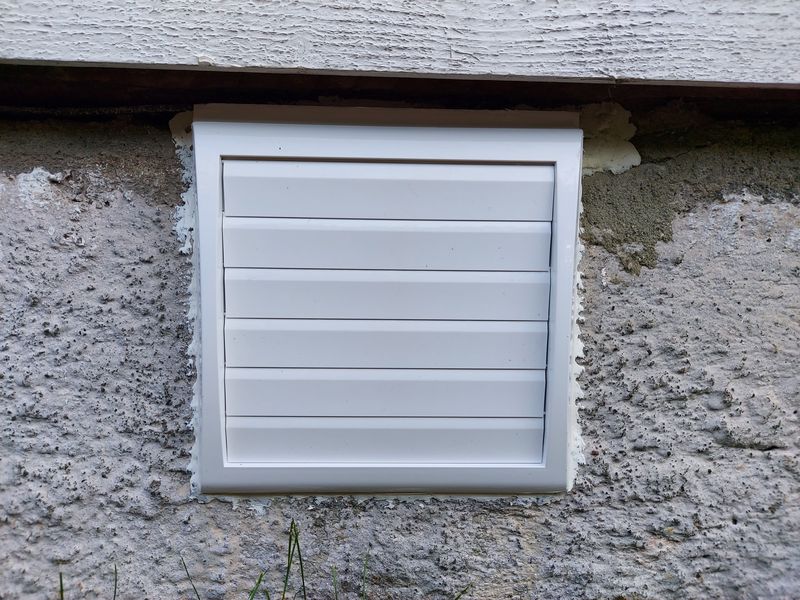
I had a lot of 125 mm duct parts from all my ventilation projects in the previous home office.
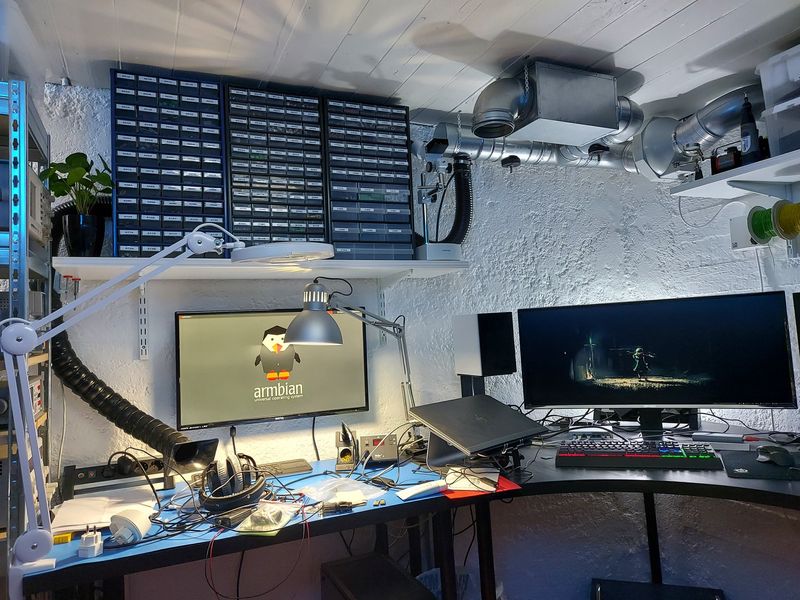
The ventilation system has two inlets; one for the fume extraction arm and one ceiling intake, with a duct silencer. Both inlets have valves so that they can be controlled individually, I normally leave the fume extraction closed and the ceiling intake open. But reverse it when I am soldering.
I have a speed controller for the fan, but I mostly run it at full speed — at which it moves 168 m³/hour (99 ft³/min) of air.
Air quality and climate
Because this room is in the basement, with no windows, I wanted to monitor the CO₂ levels. I will be spending a lot of time down here, and high CO₂ is bad for concentration and focus. I’ve purchased a Netatmo air quality sensor — it seemed to be the cheapest, and easiest, way of monitoring temperature, humidity and CO₂. It sends me a notification if the values go above or below the “safe” zone.
I’ve also made an automation for Home Assistant that turns on the fan if the CO₂ level rises above 1200 ppm.
- alias: Fan on auto
trigger:
platform: numeric_state
entity_id: sensor.netatmo_office_co2
above: 1200
action:
service: switch.turn_on
entity_id: switch.office_fan
- alias: Fan off auto
trigger:
platform: numeric_state
entity_id: sensor.netatmo_office_co2
below: 1200
action:
service: switch.turn_off
entity_id: switch.office_fan
Network
The house had lots of coax and telephone outlets, and many of the conduits ends in the basement 😃 I have repurposed some of them for CAT6 cabling.

Patch panel
I installed a 4U wall mount rack above the homelab rack, as a network patch panel. All the network cable runs in the house ends here — currently there are only three; all Wi-Fi access points, but I imagine there will be more in the future.
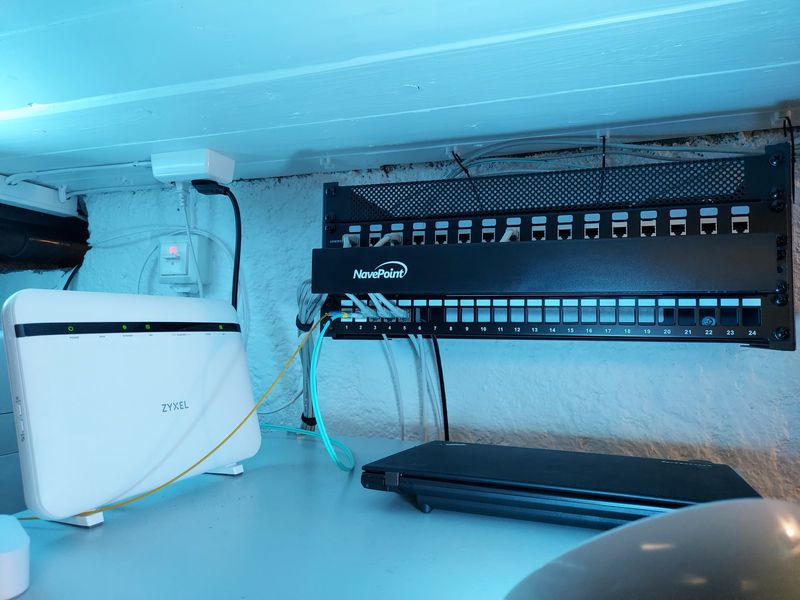
The top panel panel is for network cables in the home office. While the bottom panel is for cable runs in the house and fiber.
The yellow fiber to the left is single mode from my ISP, it has an SC keystone. The aqua on the right is multi mode 10 GbE to my desktop computer, it has an LC keystone.
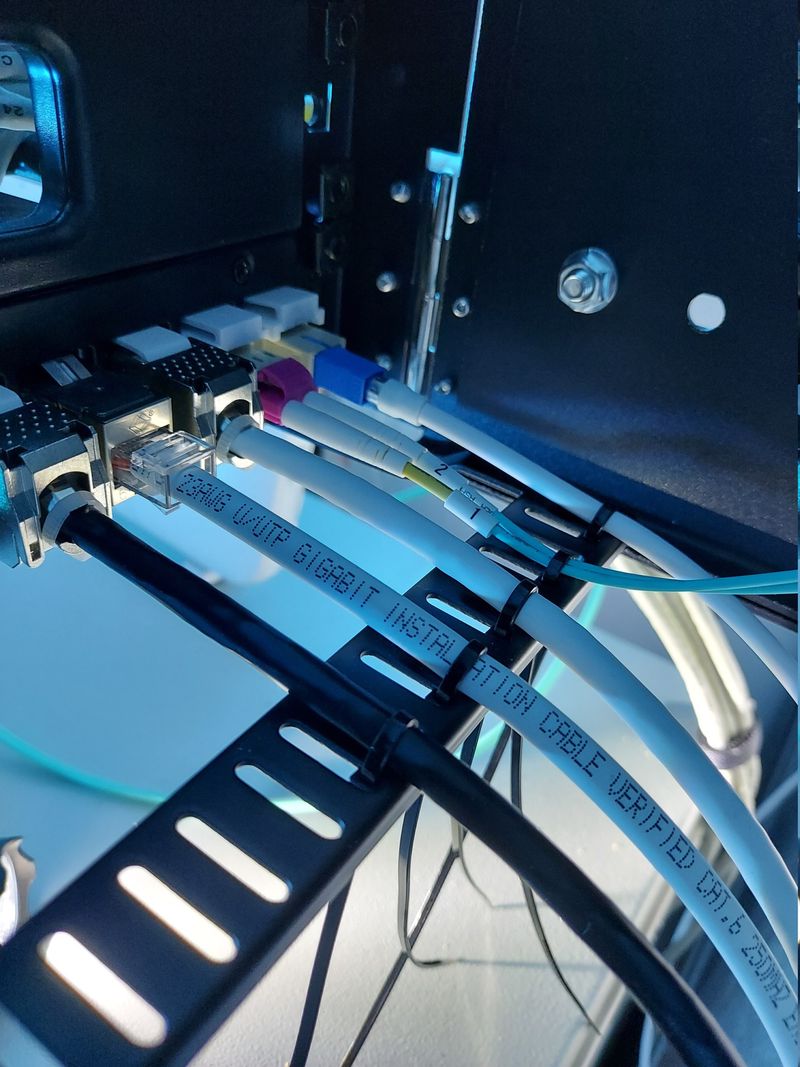
Internet
When we first bought the house, there was no fiber here — and apparently it was very difficult to dig across the road to get access to it. But a few weeks before the final handover the local fiber ISP announced that they had reopened the fiber project in this area and I signed up 😄
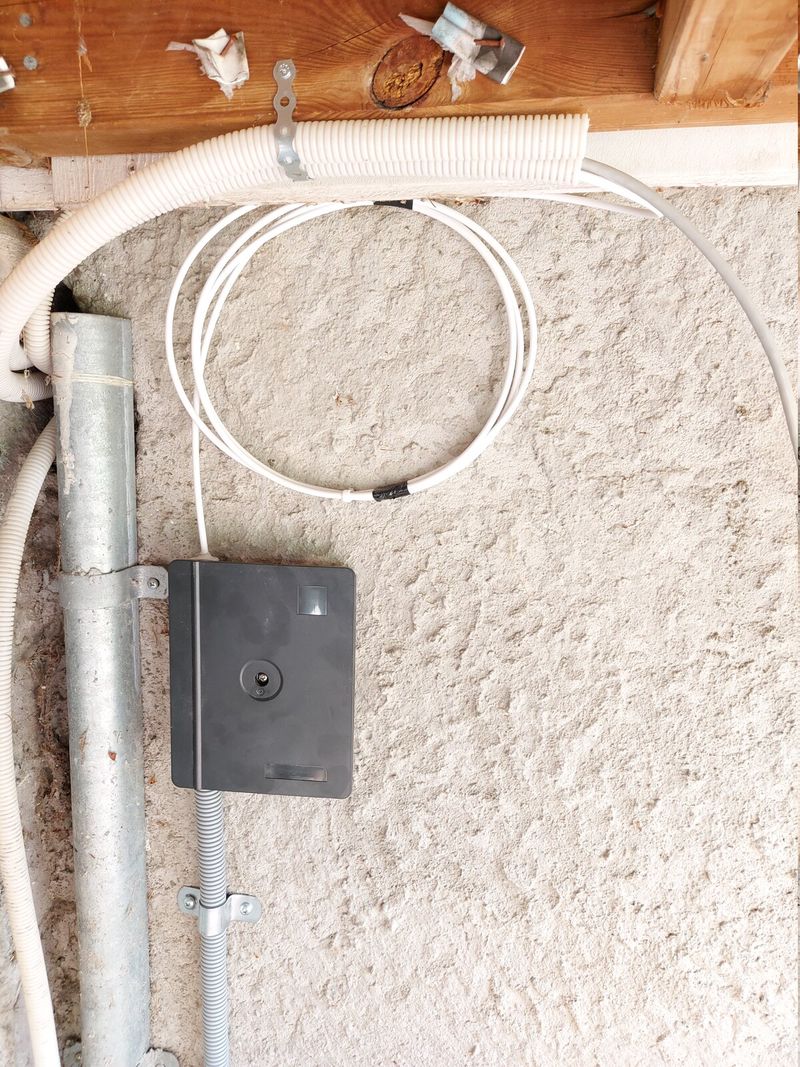
I had to endure 4G for a few months, before the fiber got installed. I currently have 500 Mbit, with the option of 1 Gbit.
Electricity
Before I started painting; I pulled out all the electrics, and once finished with the renovation I got an electrician to install two new 16A dedicated circuits here. One on each side of the room — the homelab rack, heat pump, air compressor and a few other things are on one circuit. While all my electronics equipment, desk, computer, etc is on the other.
The lights are spread on both circuits, as is the homelab rack (with the help of an ATS). So it won’t turn completely dark here should I blow a fuse.
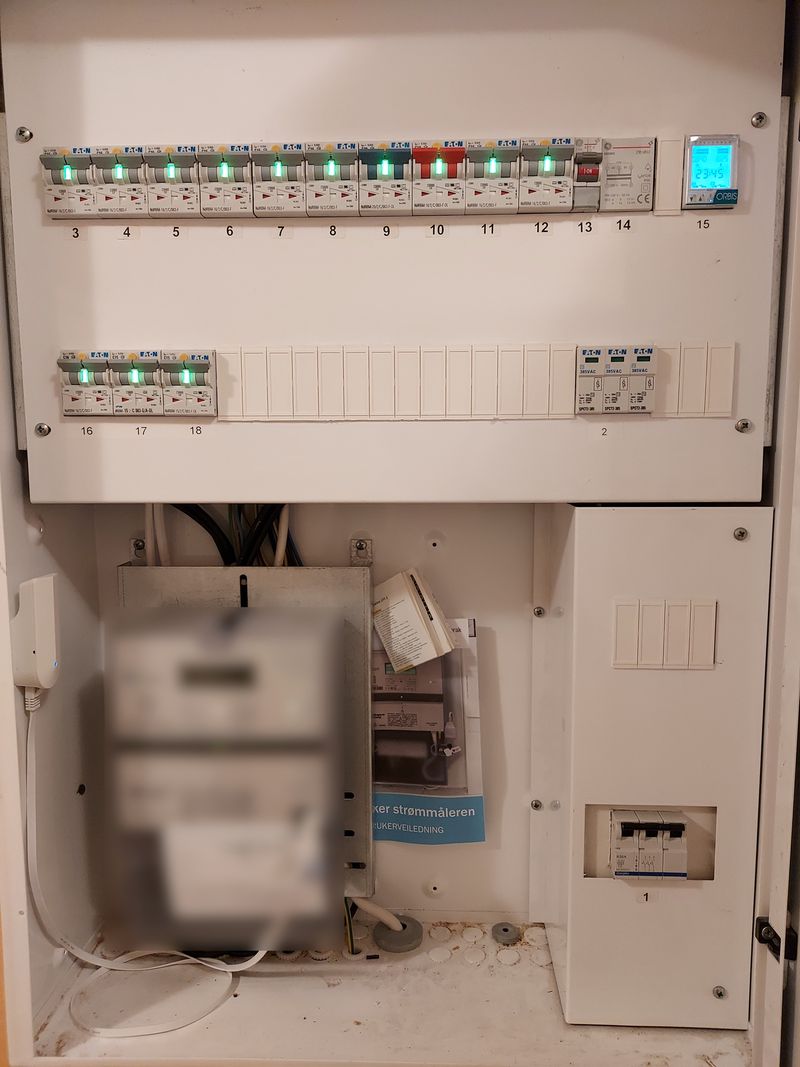
We replaced everything inside the main house distribution box when we moved in, installing surge protection and breakers with RCD protection and indicators. These breakers have LEDs indicating the amount of residual current, if any.
Power sockets
You can never have enough power sockets! I have mounted five power strips on the wall under my desk.
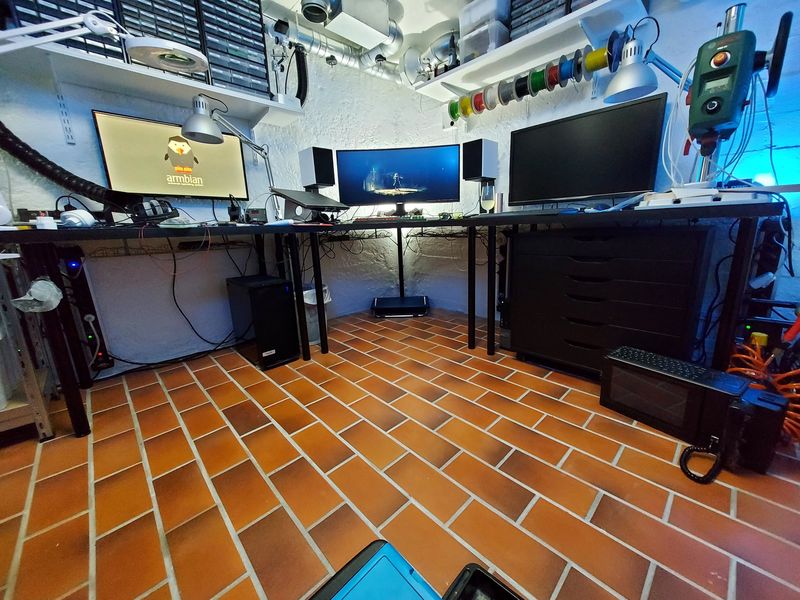
From the left:
- 8 outlets, behind the shelf, for my electronics equipment
- 6 outlets, left side of the desk
- 10 outlets, to the right of my desktop computer
- 10 outlets, to the left of the drawer section
- 8 outlets, right side of the desk
I also have two desktop power strips, one by the electronics equipment and one behind my main monitor — for easy access 👍
Lighting
Apart from my desk lights, which are IKEA Tertial, and my magnifying work light — all my lights are Philips Hue. This allows me to quickly, and easily, change the lighting and mood in the room. Warm and dimmed in the evenings, and cold and bright during the day.
I have:
- 1 × Aurelle panel, ceiling light
- 2 × Bloom
- 1 × Iris
- 2 × E27 bulbs
- 2 m LED strip
I have two Tap buttons, one on my desk, and one by the entrance. To make the room seem bigger and more spacious I am lighting up all corners and open wall surfaces.
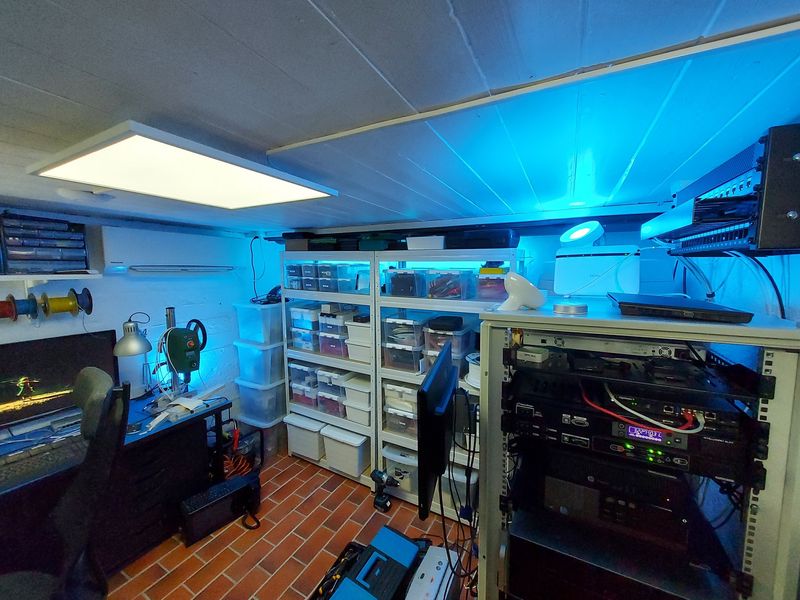
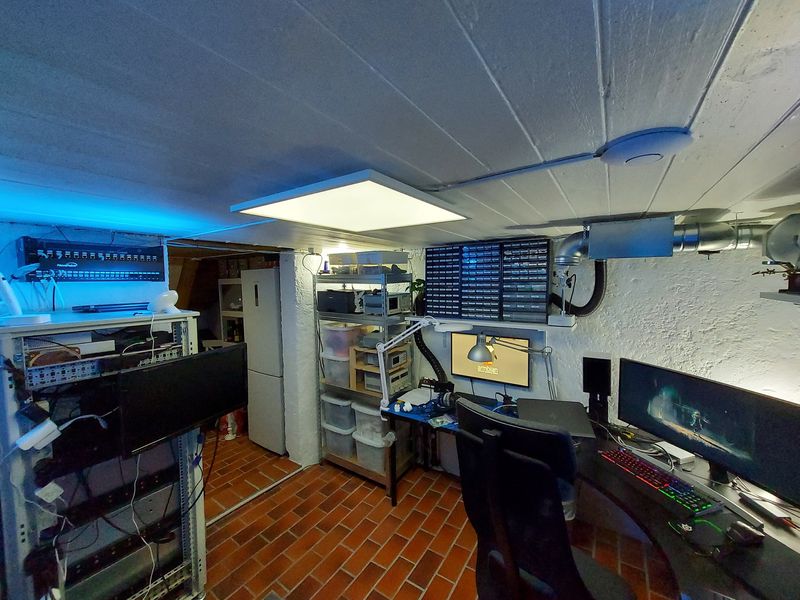
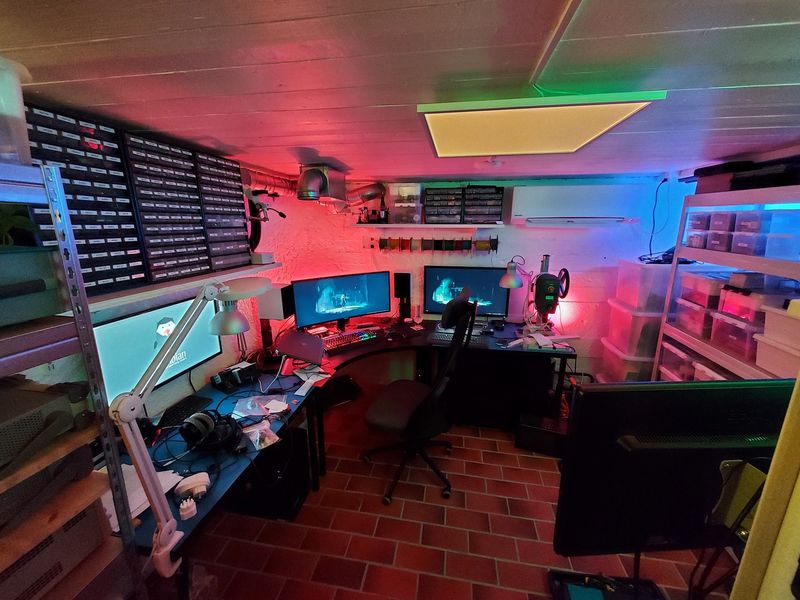
The light in the adjacent room also has a Hue bulb, so that I can dim that light as well.
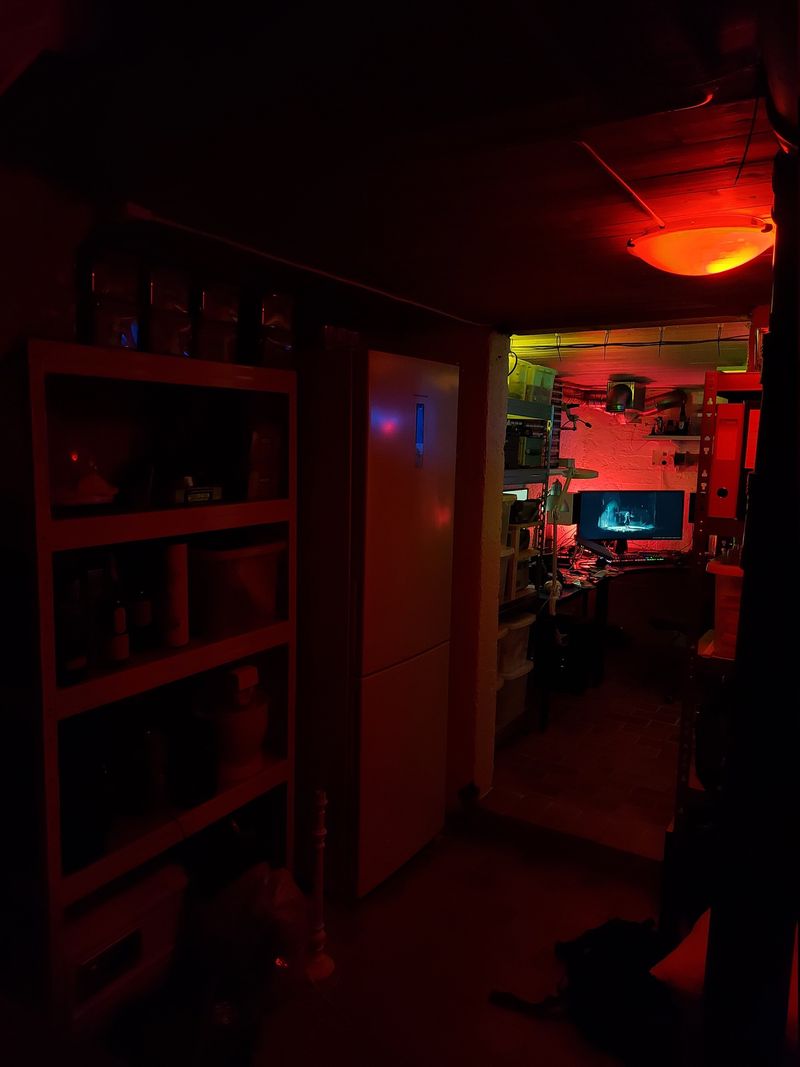
Desk
The desk in my previous home office was way undersized, I didn’t have enough space for my electronics lab and to work on projects. So I made sure not to make that mistake again. I got a corner desk with one meter extensions on both sides.
The desk is 60 cm deep, and 2.20 meter in both directions. Some space is lost because of the corner, but I finally have enough desk space 😄
Both sides are covered with blue ESD rubber mats.
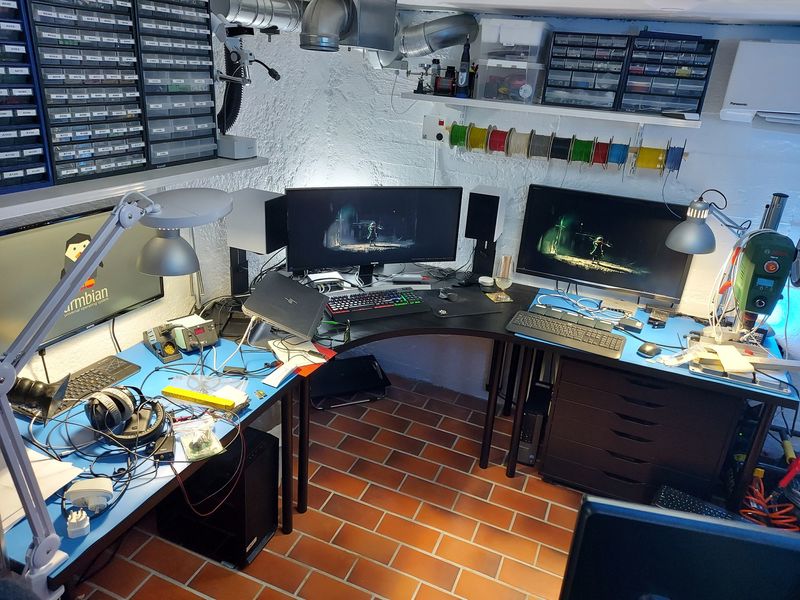
Work bench
On the right side of my desk is my work bench. I have my drill press here, and the space is normally available for working on misc projects.

On the wall is a 32" IPS monitor, driven by a Dell Optiplex 9010 computer. It has a wireless keyboard and mouse, so they are easy to get out of the way when I don’t need them. I often use that monitor as a fake window, since this room is below ground and has no natural light.
I made sure to get an IPS monitor, to get wide viewing angles. It is mounted to the wall with an ultraslim wall mount, just 18 mm from the wall.
It’s nice to share a glass of Lagavulin in the evening ☺️
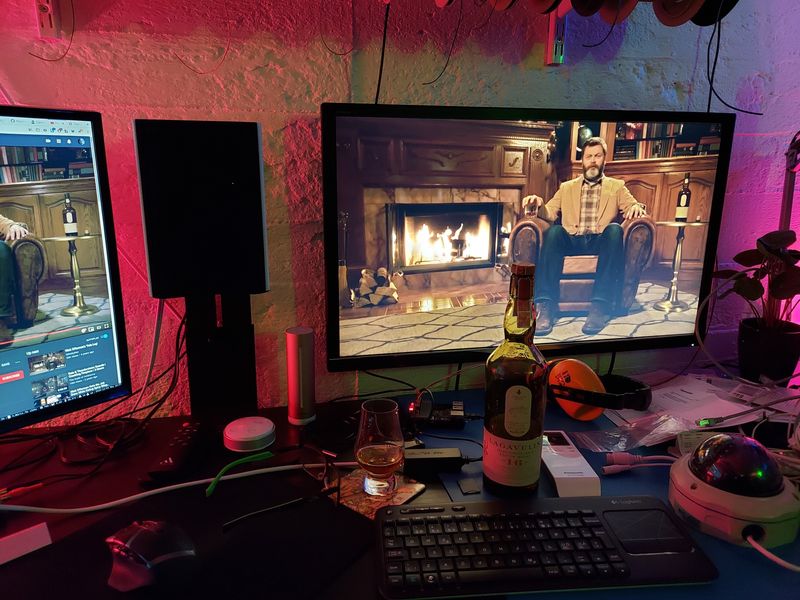
Electronics lab
On the left side is the electronics lab, this is where I solder and build my electronics projects.
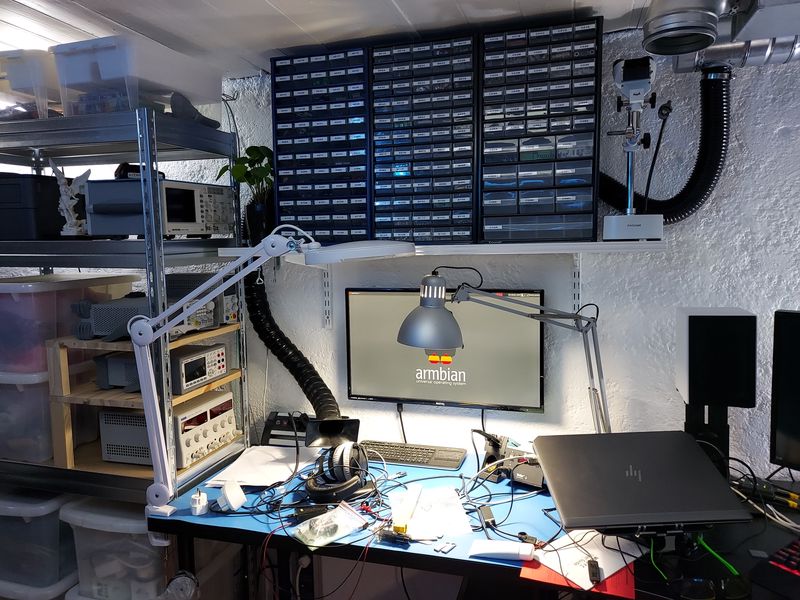
On the shelf above are all the small components that I most commonly use, the drawers are labeled with a location ID. And my self-made logistics system keeps track of where everything is located.
The monitor on the wall is driven by a PINE64 ROCKPro64 single-board computer, running Armbian, and has a wireless keyboard and mouse pad. I mostly use it for looking up drawings and data sheets while soldering and working on projects. It too is mounted using an ultraslim wall mount, 18 mm from the wall.
I was very happy that all my electronics equipment fit in the shelf on the left, this frees up a lot of desk space while keeping them easily reachable.
The fume extraction arm is also mounted in such a way that doesn’t take up unnecessary space 👍
Homelab
In the opposite corner from the desk is the homelab rack, and above it; the network patch panel. This places the rack behind me, as far away as possible, altough only a few meters — it does help to reduce the noise a bit.
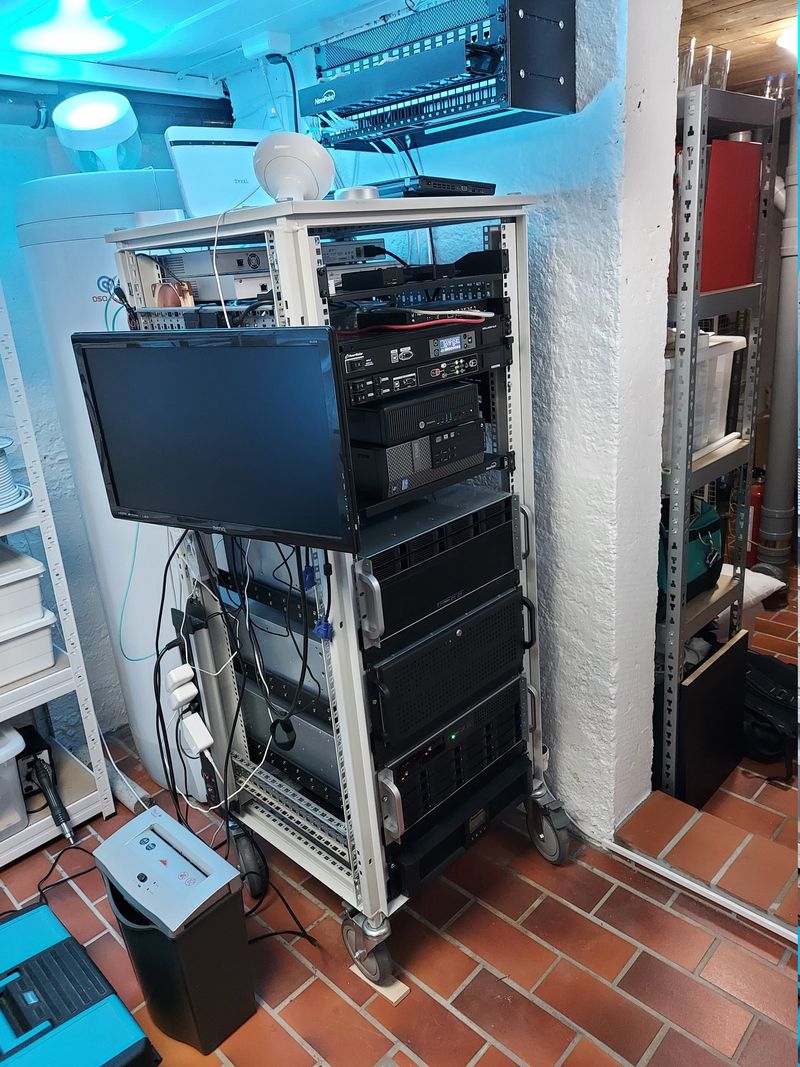
The back of the server rack faces the water heater. I’ve been reassured by the plumber that this is perfectly safe. I did look at other placement options, but this was the only one that made sense to maximize the usage of the room.
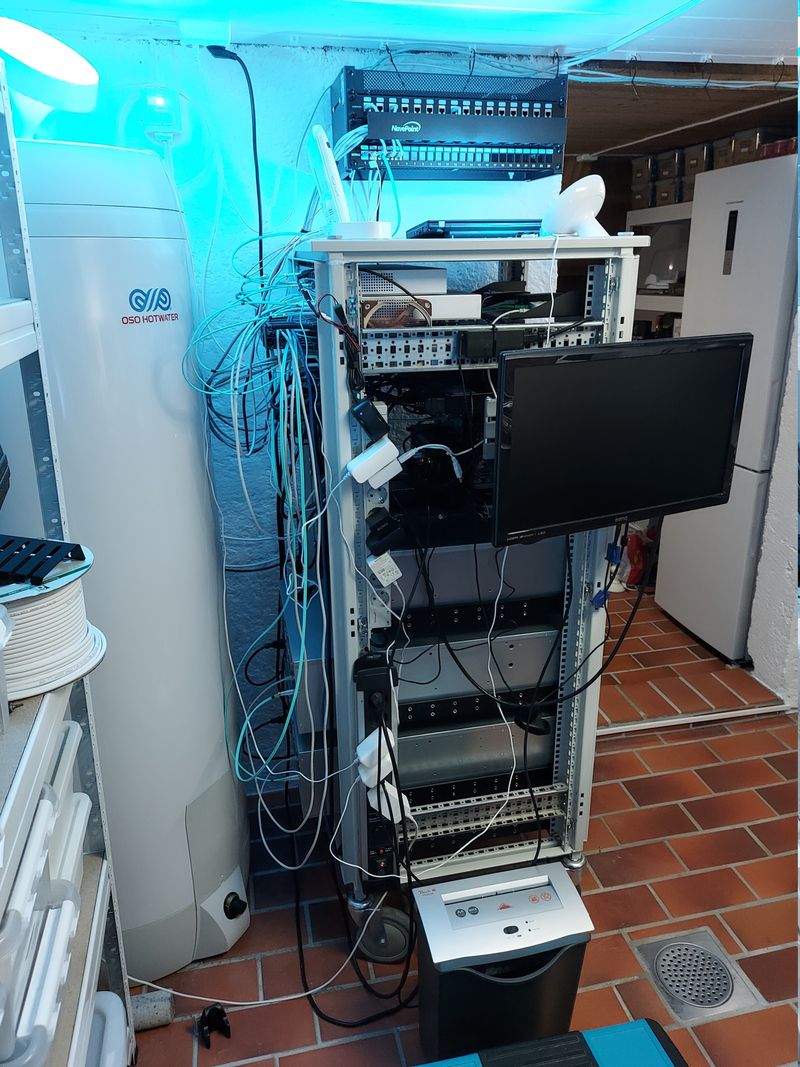
The end — thanks for reading 😃
